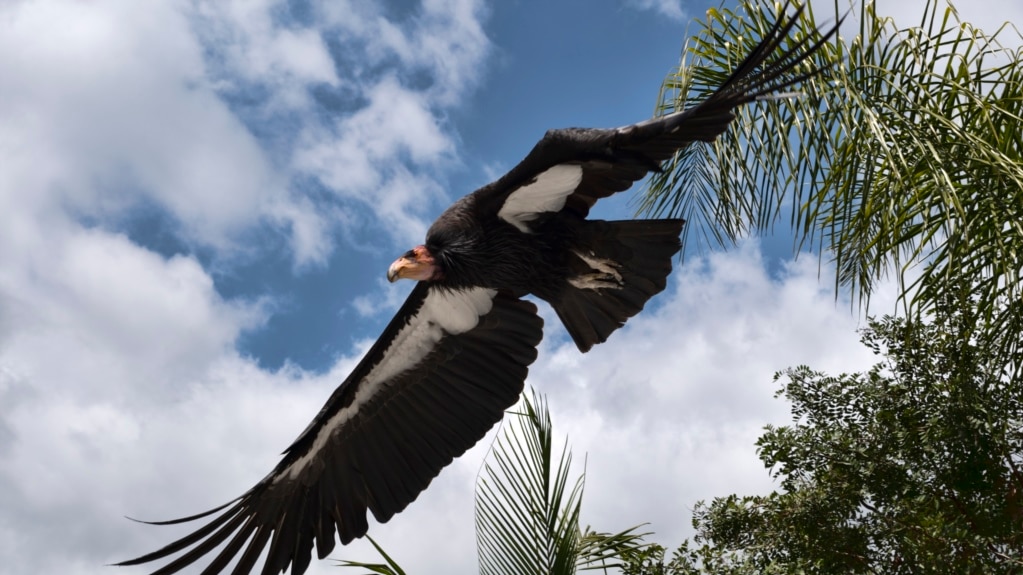The Endangered Species Act had widespread support when President Richard Nixon signed it into law late in 1973. In the 50 years since, the effects of the legislation have been both successful and complex.
Most Americans celebrated the law that helped save animals such as the bald eagle and bison. But when the law stood in the way of economic progress, many questioned whether it was too strong.
The act took effect around the same time as other laws designed to protect natural resources such as water, air and the wilderness. In the 1960s and 1970s, no other country in the world had put such wide protections into place.
Concerns came later when the law prevented projects such as a hydroelectric dam in Tennessee from moving forward. The concern? A small river fish no one had ever heard of.
That fish is called the snail darter. Plans to protect the fish held up progress on the Tellico Dam for more than two years. Biologists eventually decided to catch the small fish and move it to other rivers.
The fish population grew over time and the snail darters were removed from the endangered species list in 1984. About one year ago, the fish had fully recovered.
Jim Williams was the first so-called “fish guy” in the Office of Endangered Species. When his group listed the fish, he recalled, the decision made a lot of people upset.
He said his director told him not to list the fish. But Williams said he planned to follow the law and make decisions based on facts, not on possible public reaction.
The snail darter decision showed the U.S. government that the law was going to be difficult to manage. Some said the government should not try to save all species. Others said all animals and plants should be safe from extinction. The debate continues today.
Many more disputes over the protection of species came up over the next 45 years. In each case, employees at the Endangered Species Office made decisions that upset some people but ultimately saved the animals.
Gray wolves
In northern Minnesota in the 1980s, the gray wolf population had recovered from only around a few hundred to about 1,000. The Endangered Species Act had helped save the gray wolf.
With the population growing, people wanted permission to hunt the animals. The Fish and Wildlife Service sought to cooperate with the state of Minnesota and open the gray wolf to hunting.
The move required a regulation showing that a hunting season would help the wolves and was the only way to control their population.
Ron Nowak was a wolf expert in the Endangered Species Office at the time. The Fish and Wildlife Service told Nowak to write the regulation. “And I said, ‘It would be illegal,’” Nowak said.
The Fish and Wildlife Service found someone else to write the regulation. Conservation groups took legal action and called Nowak as a witness. He traveled to Minnesota to tell the government that wolves should not be open to hunting.
California condor
LaVerne Smith started working in the Endangered Species Office in 1978. Soon after came a major decision involving the California condor, the largest bird native to North America. By 1982, only 23 California condors were left. Biologists were looking at whether the species could be saved.
The office made a plan to move the remaining birds into a safe and closed area and breed them.
The plan worked. Today, there are more than 400 California condors. They can even be seen flying over the Grand Canyon.
Smith said, “the day I saw one sail over the Grand Canyon, I was like, ‘Oh my God! That was all worth it.’”
Later in her career, Smith led the effort to list the polar bear as endangered. It marked the first time an animal was listed as endangered because of climate change.
Freshwater mussels
Marc Imlay began working at the Endangered Species Office in 1971, two years before the current Endangered Species Act was passed.
Imlay is an expert on mollusks – small animals including snails, mussels and slugs. He had concerns that hydroelectric dams were putting freshwater mussels in danger in states such as Missouri and Tennessee.
At one point, Imlay decided to make a phone call to a conservation group in Missouri to tell them that a planned dam would put the mussels in danger.
The call worked. He got locals to pay attention to the organism and the dam was stopped. In time, his work prevented a number of dams from being built.
While some could argue that Imlay slowed economic progress, he said in other cases he found a way to help development move forward.
“Time and time again,” he said, “you can work with a developer” to save high-quality land.
I’m Dan Friedell.

